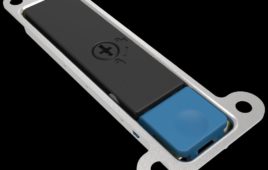Verizon might be one of many pushing for rule changes in the 3.5 GHz CBRS band, but the carrier isn’t stalling its work with those airwaves while that debate plays out.
The carrier on Monday said it achieved the first ever use of CBRS band 48 spectrum in an LTE-Advanced demonstration of carrier aggregation working alongside partners Federated Wireless, Ericsson, and Qualcomm.
The test reportedly took place in Ericsson’s Plano, Texas, lab, and utilized 256-QAM technology on two 20 MHz channels in the 3.5 GHz band. The demonstration was conducted using Ericsson’s band 48 Radio Dot System and Domain proxy alongside Federated Wireless’ Spectrum Controller spectrum management service. Qualcomm provided a test device running on a Snapdragon LTE modem.
Verizon Chief Network Officer Nicola Palmer said the achievement “greatly advances our work in emerging spectrum bands,” and indicated Verizon is “leading the way in creating an ecosystem around the use of CBRS spectrum which will lead to greater capacity and speed for our customers.”
Federated Wireless CEO Iyad Tarazi similarly hailed the demonstration as “an exciting milestone.”
“The CBRS ecosystem has truly reached full commercial viability, and Verizon will soon be able to enhance its customers’ experience with this latest wireless network innovation,” Tarazi commented.
The announcement, however, comes as Verizon and other industry interests lobby the Federal Communications Commission to change the rules in the CBRS band and make it more suitable for commercial 5G deployments. Specifically, the carriers want the Commission to make license terms and license areas longer – or in other words, more like traditional wireless licenses and less in the image of a new shared band.
Verizon and others including T-Mobile, AT&T, Nokia, CTIA, and GSMA argue investment in the 3.5 GHz band hinges on carriers’ ability to secure long-term returns on deployments. This, they say, isn’t supported by the current framework of three-year license terms, tiny license areas, and a shared user setup.
“The viability of the 3.5 GHz band for both PAL and General Authorized Access (GAA) users depends on licensees investing to create integrated, densely deployed, heterogeneous networks,” Verizon attorneys wrote in a recent filing. “The current 3.5 GHz framework provides little incentive for that degree of investment. And unless the Commission acts to adjust the rules accordingly, the level of investment will be inadequate to maximize band utility for PAL and GAA users alike.”
But others, including Google and public advocacy groups, say the proposed changes would undermine investments – including from players like Federated Wireless – that have already been made in the band and would put use of the band out of reach for all but the largest operators.
“CTIA and T-Mobile assert that adopting rules geared to maximize auction participation by large regional or national telecommunications carriers will best promote U.S. leadership in 5G technologies. But this argument presumes that 5G networks will be little more than an expansion of the traditional carrier offerings that characterize previous generations of wireless technologies. As several parties have made clear, the opposite is true,” Google counsel contended.
More on the CBRS debate here, here, and here.
Regardless of the outcome of this debate, it seems Verizon and its partners are moving forward with CBRS testing.
A Verizon spokeswoman told Wireless Week “it’s hard to predict what the FCC may do, so we are continuing to drive towards CBRS with what we know now, and will adapt if necessary.”
Ericsson indicated it plans to introduce a full portfolio of its Radio System products for the 3.5 GHz band across macro, micro and in-building segments, starting with the Radio Dot, to serve customer needs.
Verizon said a full, live demonstration of its LTE-Advanced CBRS work will be on display at Mobile World Congress Americas next month.
Filed Under: Telecommunications (spectrums)




